Today's last postcard is another Unesco card, this time from Sri Lanka. I already had a couple of postcards showing the paintings in the bottom right corner, but it's nice to see some outside views as well.
Sigiriya is an ancient palace located in the central Matale District near the town of Dambulla in the Central Province, Sri Lanka. The name refers to a site of historical and archaeological significance that is dominated by a massive column of rock nearly 200 metres high. According to the ancient Sri Lankan chronicle the Culavamsa, this site was selected by King Kasyapa (477 – 495 CE) for his new capital. He built his palace on the top of this rock and decorated its sides with colourful frescoes. On a small plateau about halfway up the side of this rock he built a gateway in the form of an enormous lion. The name of this place is derived from this structure —Sīhāgiri, the Lion Rock. The capital and the royal palace was abandoned after the king's death. It was used as a Buddhist monastery until the 14th century.
Sigiriya today is a UNESCO listed World Heritage Site. It is one of the best preserved examples of ancient urban planning. It is the most visited historic site in Sri Lanka.
Wednesday 16 September 2015
Kinkaku-ji, Kyoto, Japan
I already had postcards of Kinkaku-ji, and while it's still a very beautiful postcard, I have to confess I was more excited to receive one of these Moomin stamps. :P
Kinkaku-ji (lit. "Temple of the Golden Pavilion"), officially named Rokuon-ji, is a Zen Buddhist temple in Kyoto, Japan. It is one of the most popular buildings in Japan, attracting a large number of visitors annually. It is designated as a National Special Historic Site and a National Special Landscape, and it is one of 17 locations comprising the Historic Monuments of Ancient Kyoto World Heritage Site.
Kinkaku-ji (lit. "Temple of the Golden Pavilion"), officially named Rokuon-ji, is a Zen Buddhist temple in Kyoto, Japan. It is one of the most popular buildings in Japan, attracting a large number of visitors annually. It is designated as a National Special Historic Site and a National Special Landscape, and it is one of 17 locations comprising the Historic Monuments of Ancient Kyoto World Heritage Site.
Greetings from Chile
I was expecting it to be really difficult to get this card sent from Chile, but I had sent Daniela GF UK a little earlier so she was kind enough to help me with this. ^_^ Thank you so much!
I find Chile a really interesting country as it has such varied geography.
The arid Atacama Desert in northern Chile contains great mineral wealth, principally copper. The relatively small central area dominates in terms of population and agricultural resources, and is the cultural and political center from which Chile expanded in the late 19th century when it incorporated its northern and southern regions. Southern Chile is rich in forests and grazing lands, and features a string of volcanoes and lakes. The southern coast is a labyrinth of fjords, inlets, canals, twisting peninsulas, and islands.
I find Chile a really interesting country as it has such varied geography.
The arid Atacama Desert in northern Chile contains great mineral wealth, principally copper. The relatively small central area dominates in terms of population and agricultural resources, and is the cultural and political center from which Chile expanded in the late 19th century when it incorporated its northern and southern regions. Southern Chile is rich in forests and grazing lands, and features a string of volcanoes and lakes. The southern coast is a labyrinth of fjords, inlets, canals, twisting peninsulas, and islands.
sheep, Norway
A random postcard I received last year. I don't really have too much to say about this one except that I really, really like it, and it's always a pleasure to receive a postcard from Catherine in Norway. :)
I do have a bit of a thing for sheep-related postcards, and I think my collection is fairly reasonable. :)
This particular card also has the added bonus of including a stunning view from Norway, what's not to like?!
I do have a bit of a thing for sheep-related postcards, and I think my collection is fairly reasonable. :)
This particular card also has the added bonus of including a stunning view from Norway, what's not to like?!
Kalwaria Zebrzydowska, Poland
Another Unesco card, this time from Poland.
Kalwaria Zebrzydowska: the Mannerist Architectural and Park Landscape Complex and Pilgrimage Park
Kalwaria Zebrzydowska is a breathtaking cultural landscape of great spiritual significance. Its natural setting – in which a series of symbolic places of worship relating to the Passion of Jesus Christ and the life of the Virgin Mary was laid out at the beginning of the 17th century – has remained virtually unchanged. It is still today a place of pilgrimage.
Kalwaria Zebrzydowska: the Mannerist Architectural and Park Landscape Complex and Pilgrimage Park
Kalwaria Zebrzydowska is a breathtaking cultural landscape of great spiritual significance. Its natural setting – in which a series of symbolic places of worship relating to the Passion of Jesus Christ and the life of the Virgin Mary was laid out at the beginning of the 17th century – has remained virtually unchanged. It is still today a place of pilgrimage.
Palace and Park of Fontainebleau, France
It looks like today's posts will be rather Unesco-centric, although that wasn't my initial plan. Oh well. These first couple of cards are from my penpal Alexandra. She actually lives within walking distance of this Unesco site! :O
The Palace of Fontainebleau is located 55 kilometres southeast of the centre of Paris, and is one of the largest French royal châteaux. The medieval castle and later château was the residence of French monarchs from Louis VII through Napoleon III. Napoleon I abdicated his throne there before being exiled to Elba. Today it is a national museum and a UNESCO World Heritage Site.
Used by the kings of France from the 12th century, the medieval royal hunting lodge of Fontainebleau, standing at the heart of a vast forest in the Ile-de-France, was transformed, enlarged and embellished in the 16th century by François I, who wanted to make a 'New Rome' of it. Surrounded by an immense park, the Italianate palace combines Renaissance and French artistic traditions.
The Palace of Fontainebleau is located 55 kilometres southeast of the centre of Paris, and is one of the largest French royal châteaux. The medieval castle and later château was the residence of French monarchs from Louis VII through Napoleon III. Napoleon I abdicated his throne there before being exiled to Elba. Today it is a national museum and a UNESCO World Heritage Site.
Used by the kings of France from the 12th century, the medieval royal hunting lodge of Fontainebleau, standing at the heart of a vast forest in the Ile-de-France, was transformed, enlarged and embellished in the 16th century by François I, who wanted to make a 'New Rome' of it. Surrounded by an immense park, the Italianate palace combines Renaissance and French artistic traditions.
Saturday 12 September 2015
Mosi-oa-Tunya / Victoria Falls, Zambia
This is only my second postcard from Zambia. ...and it's a Unesco card as well! :)
Victoria Falls, or Mosi-oa-Tunya (Tokaleya Tonga: the Smoke that Thunders), is a waterfall in southern Africa on the Zambezi River at the border of Zambia and Zimbabwe.
The Mosi-oa-Tunya/Victoria Falls is the world’s greatest sheet of falling water and significant worldwide for its exceptional geological and geomorphological features and active land formation processes with outstanding beauty attributed to the falls i.e. the spray, mist and rainbows. This transboundary property extends over 6860 ha and comprises 3779 ha of the Mosi-oa-Tunya National Park (Zambia), 2340 ha of Victoria Falls National Park (Zimbabwe), 741 ha of the riverine strip of Zambezi National Park (Zimbabwe). A riverine strip of the Zambezi National Park extending 9 km west along the right bank of the Zambezi and islands in the river are all within the Park as far as Palm and Kandahar Islands, with the Victoria Falls being one of the major attractions. The waterfall stands at an altitude of about 915 m above mean sea level (a.m.s.l.) and spans to about 1708 m wide with an average depth of 100 m and the deepest point being 108 m. Sprays from this giant waterfall can be seen from a distance of 30 km from the Lusaka road, Zambia and 50 km from Bulawayo road, Zimbabwe. Basalts have been cut by a river system producing a series of eightspectacular gorges that serve as breeding sites for four species of endangered birds. The basalts of the Victoria Falls World Heritage property are layered unlike those of the Giants Causeway World Heritage site which are vertical and columnar.
Victoria Falls, or Mosi-oa-Tunya (Tokaleya Tonga: the Smoke that Thunders), is a waterfall in southern Africa on the Zambezi River at the border of Zambia and Zimbabwe.
The Mosi-oa-Tunya/Victoria Falls is the world’s greatest sheet of falling water and significant worldwide for its exceptional geological and geomorphological features and active land formation processes with outstanding beauty attributed to the falls i.e. the spray, mist and rainbows. This transboundary property extends over 6860 ha and comprises 3779 ha of the Mosi-oa-Tunya National Park (Zambia), 2340 ha of Victoria Falls National Park (Zimbabwe), 741 ha of the riverine strip of Zambezi National Park (Zimbabwe). A riverine strip of the Zambezi National Park extending 9 km west along the right bank of the Zambezi and islands in the river are all within the Park as far as Palm and Kandahar Islands, with the Victoria Falls being one of the major attractions. The waterfall stands at an altitude of about 915 m above mean sea level (a.m.s.l.) and spans to about 1708 m wide with an average depth of 100 m and the deepest point being 108 m. Sprays from this giant waterfall can be seen from a distance of 30 km from the Lusaka road, Zambia and 50 km from Bulawayo road, Zimbabwe. Basalts have been cut by a river system producing a series of eightspectacular gorges that serve as breeding sites for four species of endangered birds. The basalts of the Victoria Falls World Heritage property are layered unlike those of the Giants Causeway World Heritage site which are vertical and columnar.
Historic Centre of the Town of Diamantina
My collection of Brazilian Unesco cards grew a little earlier this year, when I swapped a few cards with Silvia. This is one of them.
Diamantina is a Brazilian municipality in the state of Minas Gerais. Its estimated population in 2006 was 44,746 in a total area of 3,870 km².
Arraial do Tijuco (as Diamantina was first called) was built during the colonial era in the early 18th century. As its name suggests, Diamantina was a center of diamond mining in the 18th and 19th centuries. A well-preserved example of Brazilian Baroque architecture, Diamantina is a UNESCO World Heritage Site.
From the Unesco website:
In the heart of arid and rocky mountains in north-east Minas Gerais, the Historic Center of Diamantina rises 150m up the side of a steep valley, with winding and uneven streets following the natural topography. The Baroque architecture differs from that of other Brazilian towns in being of wood, and is distinguished by its geometry and details indicating transference on a modest scale of Portuguese architectural features. Churches have similar colours and textures as civil buildings, and most have only one tower. The regularly aligned 18th and 19th century semi-detached houses with one or two floors are painted in bright colours on a white ground, and contrast with the grey flagstone paving of the streets.
The historic centre testifies to the conquest of Brazil’s interior regions, illustrating how explorers, diamond prospectors, and representatives of the Portuguese Crown forged an original culture in the 18th century, adapting their origins to the realities of the Americas.
Diamantina is a Brazilian municipality in the state of Minas Gerais. Its estimated population in 2006 was 44,746 in a total area of 3,870 km².
Arraial do Tijuco (as Diamantina was first called) was built during the colonial era in the early 18th century. As its name suggests, Diamantina was a center of diamond mining in the 18th and 19th centuries. A well-preserved example of Brazilian Baroque architecture, Diamantina is a UNESCO World Heritage Site.
From the Unesco website:
In the heart of arid and rocky mountains in north-east Minas Gerais, the Historic Center of Diamantina rises 150m up the side of a steep valley, with winding and uneven streets following the natural topography. The Baroque architecture differs from that of other Brazilian towns in being of wood, and is distinguished by its geometry and details indicating transference on a modest scale of Portuguese architectural features. Churches have similar colours and textures as civil buildings, and most have only one tower. The regularly aligned 18th and 19th century semi-detached houses with one or two floors are painted in bright colours on a white ground, and contrast with the grey flagstone paving of the streets.
The historic centre testifies to the conquest of Brazil’s interior regions, illustrating how explorers, diamond prospectors, and representatives of the Portuguese Crown forged an original culture in the 18th century, adapting their origins to the realities of the Americas.
South Street Seaport, New York, USA
I got this postcard from my friend Wanda a few years ago. I really like this postcard, and it's nice to see a slightly different view of New York.
The South Street Seaport is a historic area in the New York City borough of Manhattan, centered where Fulton Street meets the East River, and adjacent to the Financial District. The Seaport is a designated historic district, and is distinct from the neighboring Financial District. It is part of Manhattan Community Board 1 in Lower Manhattan, and is bounded by the Financial District to the west, southwest, and north; the East River to the southeast; and Two Bridges to the northeast.
It features some of the oldest architecture in downtown Manhattan, and includes the largest concentration of restored early 19th-century commercial buildings in the city. This includes renovated original mercantile buildings, renovated sailing ships, the former Fulton Fish Market, and modern tourist malls featuring food, shopping, and nightlife, with a view of the Brooklyn Bridge.
The South Street Seaport is a historic area in the New York City borough of Manhattan, centered where Fulton Street meets the East River, and adjacent to the Financial District. The Seaport is a designated historic district, and is distinct from the neighboring Financial District. It is part of Manhattan Community Board 1 in Lower Manhattan, and is bounded by the Financial District to the west, southwest, and north; the East River to the southeast; and Two Bridges to the northeast.
It features some of the oldest architecture in downtown Manhattan, and includes the largest concentration of restored early 19th-century commercial buildings in the city. This includes renovated original mercantile buildings, renovated sailing ships, the former Fulton Fish Market, and modern tourist malls featuring food, shopping, and nightlife, with a view of the Brooklyn Bridge.
Greetings from Denmark
This is one of my favourite 'Greetings from' postcards so far. It's got a lighthouse and a flag on it! :) I also like the fact that it's not too sugary-sweet pastel coloured, I think those can be a little bland.
This card seems so cheerful to me, and I like the bit about 'happy place', I had no idea of Denmark being that happy!
...and Mads Mikkelsen is mentioned on the card! I've been watching the new TV series 'Hannibal' and rather enjoy it, I think it's very cleverly done and visually stunning. Mads Mikkelsen is brilliant as Hannibal Lecter as well, a lot less over the top than Anthony Hopkins, which I like.
Also, legos! I used to have a lot of them when I was a kid and loved playing with them. I'm not too impressed with some of the more modern lego sets you can buy, they seem too ready-made and seem like they don't really leave much room for imagination as you don't really have to build stuff yourself using bricks. :P Ahhhh, and this postcard came with a matching stamp!
This card seems so cheerful to me, and I like the bit about 'happy place', I had no idea of Denmark being that happy!
...and Mads Mikkelsen is mentioned on the card! I've been watching the new TV series 'Hannibal' and rather enjoy it, I think it's very cleverly done and visually stunning. Mads Mikkelsen is brilliant as Hannibal Lecter as well, a lot less over the top than Anthony Hopkins, which I like.
Also, legos! I used to have a lot of them when I was a kid and loved playing with them. I'm not too impressed with some of the more modern lego sets you can buy, they seem too ready-made and seem like they don't really leave much room for imagination as you don't really have to build stuff yourself using bricks. :P Ahhhh, and this postcard came with a matching stamp!
Wednesday 9 September 2015
Hiroshima Electric Railway, Japan
A lovely, lovely card I received through the 'Japan - rest of the world' tag on the Postcrossing forum earlier this year. I love trams (and miss the ones in Helsinki. The local one here is too expensive for me :() and it's fascinating to see the changes throughout the years. I also have a bit of a soft spot for Hiroshima as I used to have a pen friend there years ago. I haven't heard from him for ages now, though, which is a real shame.
Hiroshima Electric Railway Co., Ltd. is a Japanese transportation company established on June 18, 1910, that operates streetcars and buses in and around Hiroshima Prefecture. It is known as "Hiroden" for short.
The company's rolling stock includes an eclectic range of trams manufactured from across Japan and Europe, earning it the nickname "The Moving Streetcar Museum".
Hiroshima Electric Railway Co., Ltd. is a Japanese transportation company established on June 18, 1910, that operates streetcars and buses in and around Hiroshima Prefecture. It is known as "Hiroden" for short.
The company's rolling stock includes an eclectic range of trams manufactured from across Japan and Europe, earning it the nickname "The Moving Streetcar Museum".
Tel Aviv, Israel
Another swap card from earlier this year. I don't have too many postcards from Israel so it's always nice to get more. ...and I really like Israeli stamps, they seem to issue a lot of really beautiful stamps!
Tel Aviv is the second most populous city in Israel, with a population of 414,600 and a land area of 52 square kilometres. Tel Aviv forms part of the Tel Aviv Metropolitan Area, also known as Gush Dan, which constitutes Israel's largest metropolitan area and has 3,464,100 residents, 42% of the country's population. Tel Aviv-Yafo is the largest and most populous section of the metropolitan area.
The city is located on the Mediterranean coast in central-west Israel and is governed by the Tel Aviv-Yafo municipality, headed by Ron Huldai. Tel Aviv is home to many foreign embassies. Residents of Tel Aviv are referred to in Hebrew as Tel Avivim or by the singulars: Tel Avivi (for males) and Tel Avivit (for females).
Tel Aviv was founded by the Jewish community on the outskirts of the ancient port city of Jaffa in 1909. Immigration by mostly Jewish refugees meant that the growth of Tel Aviv soon outpaced Jaffa's, which had a majority Arab population at the time. Tel Aviv and Jaffa were merged into a single municipality in 1950, two years after the establishment of the State of Israel. Tel Aviv's White City, designated a UNESCO World Heritage Site in 2003, comprises the world's largest concentration of Bauhaus buildings.
With over a million international visitors annually, Tel Aviv is a global city, a technological and economic hub, home to the Tel Aviv Stock Exchange, corporate offices and research and development centers. It is the country's financial capital and a major performing arts and business center. Tel Aviv has the second-largest economy of any city in the Middle East after Abu Dhabi, and has the 31st highest cost of living in the world. Tel Aviv is the fifth-most-visited city in the Middle East and Africa. Known as "The City that Never Sleeps" and a "party capital", it has a lively nightlife, dynamic atmosphere and a famous 24-hour culture.
Tel Aviv is the second most populous city in Israel, with a population of 414,600 and a land area of 52 square kilometres. Tel Aviv forms part of the Tel Aviv Metropolitan Area, also known as Gush Dan, which constitutes Israel's largest metropolitan area and has 3,464,100 residents, 42% of the country's population. Tel Aviv-Yafo is the largest and most populous section of the metropolitan area.
The city is located on the Mediterranean coast in central-west Israel and is governed by the Tel Aviv-Yafo municipality, headed by Ron Huldai. Tel Aviv is home to many foreign embassies. Residents of Tel Aviv are referred to in Hebrew as Tel Avivim or by the singulars: Tel Avivi (for males) and Tel Avivit (for females).
Tel Aviv was founded by the Jewish community on the outskirts of the ancient port city of Jaffa in 1909. Immigration by mostly Jewish refugees meant that the growth of Tel Aviv soon outpaced Jaffa's, which had a majority Arab population at the time. Tel Aviv and Jaffa were merged into a single municipality in 1950, two years after the establishment of the State of Israel. Tel Aviv's White City, designated a UNESCO World Heritage Site in 2003, comprises the world's largest concentration of Bauhaus buildings.
With over a million international visitors annually, Tel Aviv is a global city, a technological and economic hub, home to the Tel Aviv Stock Exchange, corporate offices and research and development centers. It is the country's financial capital and a major performing arts and business center. Tel Aviv has the second-largest economy of any city in the Middle East after Abu Dhabi, and has the 31st highest cost of living in the world. Tel Aviv is the fifth-most-visited city in the Middle East and Africa. Known as "The City that Never Sleeps" and a "party capital", it has a lively nightlife, dynamic atmosphere and a famous 24-hour culture.
Greetings from Russia
I somehow ended up with three of these! :O I'm quite surprised as well that it took as long as it took for this card to be made, seeing as Russia is the biggest (?) Postcrossing country at the moment, and has been for a while.
I've got a bit of a soft spot for Matryoshka dolls, I think they are really nice. I remember having one when I was a child, I wonder what's happened to it? I would love a new one but the ones I've seen in shops here have been pretty expensive and I just haven't had the spare cash. It's getting easier to find matryoshka-themed things, though, which I don't mind at all. :)
The Trans-Siberian Railway is a network of railways connecting Moscow with the Russian Far East and the Sea of Japan. With a length of 9,289 km, it is the longest railway line in the world. There are connecting branch lines into Mongolia, China and North Korea. It has connected Moscow with Vladivostok since 1916, and is still being expanded. It was built from 1891 to 1916 under the supervision of Russian government ministers who were personally appointed by Tsar Alexander III and by his son, Tsar Nicholas II. Even before it had been completed, it attracted travellers who wrote of their adventures.
I've got a bit of a soft spot for Matryoshka dolls, I think they are really nice. I remember having one when I was a child, I wonder what's happened to it? I would love a new one but the ones I've seen in shops here have been pretty expensive and I just haven't had the spare cash. It's getting easier to find matryoshka-themed things, though, which I don't mind at all. :)
The Trans-Siberian Railway is a network of railways connecting Moscow with the Russian Far East and the Sea of Japan. With a length of 9,289 km, it is the longest railway line in the world. There are connecting branch lines into Mongolia, China and North Korea. It has connected Moscow with Vladivostok since 1916, and is still being expanded. It was built from 1891 to 1916 under the supervision of Russian government ministers who were personally appointed by Tsar Alexander III and by his son, Tsar Nicholas II. Even before it had been completed, it attracted travellers who wrote of their adventures.
Teide National Park, Spain
A swap card from earlier this year. It's taken me a while to get a postcard of Teide National Park... My grandma has spent a few winters in Tenerife now but I've never got round to asking her, for various reasons. Well, I finally have one. :)
Teide National Park is a national park located in Tenerife (Canary Islands, Spain). It is centered on 3718 m Mount Teide, the highest mountain of Spain and the islands of the Atlantic (it is the third largest volcano in the world from its base on the ocean floor). It was declared a national park on 22 January 1954, making it one of the oldest national parks in Spain. It is also the largest national park in Spain and an important part of the Canary Islands. Another volcano located in the park (next to the Teide) is the Pico Viejo. It is the second largest volcano in the Canary Islands with its 3,135 m peak.
The park has an area of 18,990 hectares and was named a World Heritage Site by UNESCO on June 28, 2007. Since the end of 2007, it has also been one of the 12 Treasures of Spain. Midway up the mountain are the telescopes of the Observatorio del Teide. Territorially, it belongs to the municipality of La Orotava.
Teide is the most visited national park in Spain, with a total of 2.8 million visitors, according to the Instituto Canario de Estadística (ISTAC), and it is one of the most visited national parks in the world. The Teide is the most famous natural icon not only of Tenerife but also of all the Canary Islands.
Teide National Park is a national park located in Tenerife (Canary Islands, Spain). It is centered on 3718 m Mount Teide, the highest mountain of Spain and the islands of the Atlantic (it is the third largest volcano in the world from its base on the ocean floor). It was declared a national park on 22 January 1954, making it one of the oldest national parks in Spain. It is also the largest national park in Spain and an important part of the Canary Islands. Another volcano located in the park (next to the Teide) is the Pico Viejo. It is the second largest volcano in the Canary Islands with its 3,135 m peak.
The park has an area of 18,990 hectares and was named a World Heritage Site by UNESCO on June 28, 2007. Since the end of 2007, it has also been one of the 12 Treasures of Spain. Midway up the mountain are the telescopes of the Observatorio del Teide. Territorially, it belongs to the municipality of La Orotava.
Teide is the most visited national park in Spain, with a total of 2.8 million visitors, according to the Instituto Canario de Estadística (ISTAC), and it is one of the most visited national parks in the world. The Teide is the most famous natural icon not only of Tenerife but also of all the Canary Islands.
Labels:
2015,
canary islands,
national parks,
spain,
swap,
tenerife,
unesco
Turku Castle, Finland
I've been participating in the 'summer card pal' project in the Finnish community on the Postcrossing forum again this summer. I've had two 'summer card pals' this summer, and it's been really nice again. I seem to prefer receiving more than one card from someone and actually getting to know people, rather than having a lot of one-off encounters (which kind of makes the official side of Postcrossing pointless for me, although I did send a couple of officials again recently).
This card is from Susanna. She visited the Turku Castle this summer and sent me a card from there - and actually got me a special cancellation as well! :)
Turku Castle (Finnish: Turun linna, Swedish: Åbo slott) is a medieval building in the city of Turku in Finland. Together with Turku Cathedral, the castle is one of the oldest buildings still in use in Finland. Turku Castle is the largest surviving medieval building in Finland. It was founded in the late 13th century and stands on the banks of the Aura River.
Turku Castle (Finnish: Turun linna, Swedish: Åbo slott) is a medieval building in the city of Turku in Finland. Together with Turku Cathedral, the castle is one of the oldest buildings still in use in Finland. Turku Castle is the largest surviving medieval building in Finland. It was founded in the late 13th century and stands on the banks of the Aura River.
Sunday 6 September 2015
Sighișoara, Romania
Today's last card was a surprise from my friend Astrid, who attended a Postcrossing meet-up in Romania. I had no idea she was planning on going there! It must have been a pretty interesting place to visit as well, and looks very beautiful.
Sighișoara is a city on the Târnava Mare River in Mureș County, Romania. Located in the historic region of Transylvania, Sighișoara has a population of 28,102 according to the 2011 census.
Historic Centre of Sighişoara is a Unesco site. Founded by German craftsmen and merchants known as the Saxons of Transylvania, Sighişoara is a fine example of a small, fortified medieval town which played an important strategic and commercial role on the fringes of central Europe for several centuries.
Transylvania is a historical region in the central part of Romania. Bounded on the east and south by its natural borders, the Carpathian mountain range, historical Transylvania extended in the west to the Apuseni Mountains; however, the term sometimes encompasses not only Transylvania proper, but also the historical regions of Crișana, Maramureș, and Romanian part of Banat. The region of Transylvania is known for the scenic beauty of its Carpathian landscape and its rich history. In the English-speaking world it has been commonly associated with vampires, chiefly due to the influence of Bram Stoker's famous novel Dracula as well as the many later film adaptations.
Sighișoara is a city on the Târnava Mare River in Mureș County, Romania. Located in the historic region of Transylvania, Sighișoara has a population of 28,102 according to the 2011 census.
Historic Centre of Sighişoara is a Unesco site. Founded by German craftsmen and merchants known as the Saxons of Transylvania, Sighişoara is a fine example of a small, fortified medieval town which played an important strategic and commercial role on the fringes of central Europe for several centuries.
Transylvania is a historical region in the central part of Romania. Bounded on the east and south by its natural borders, the Carpathian mountain range, historical Transylvania extended in the west to the Apuseni Mountains; however, the term sometimes encompasses not only Transylvania proper, but also the historical regions of Crișana, Maramureș, and Romanian part of Banat. The region of Transylvania is known for the scenic beauty of its Carpathian landscape and its rich history. In the English-speaking world it has been commonly associated with vampires, chiefly due to the influence of Bram Stoker's famous novel Dracula as well as the many later film adaptations.
Labels:
2015,
friends,
romania,
sighișoara,
transylvania,
unesco
Greetings from Philippines
I know I've said this before but now I really think I'll have to give up on trying to get all the 'Greetings from' postcard from Postallove sent from their respective countries of origin. It's just getting far too difficult. The next batch will include Peru, South Africa, Iceland, Slovakia, Romania and New Zealand. New Zealand seems to be the only country out of those six that I will have any chances of getting. I'm a little annoyed but then, they *are* just postcards after all, aren't they?! :P
Manila is the capital city of the Philippines. It is one of the sixteen cities which, along with the municipality of Pateros, make up Metro Manila, the National Capital Region, that has an overall population of around 12 million.
Mount Apo is a large solfataric, potentially active stratovolcano in the island of Mindanao, Philippines. With an elevation of 2,954 metres above sea level, it is the highest mountain in the Philippine Archipelago and is located between Davao City and Davao del Sur province in Region XI and Cotabato province in Region XII. The peak overlooks Davao City 45 kilometres to the northeast, Digos City 25 kilometres to the southeast, and Kidapawan City 20 kilometres to the west.
Manila is the capital city of the Philippines. It is one of the sixteen cities which, along with the municipality of Pateros, make up Metro Manila, the National Capital Region, that has an overall population of around 12 million.
Mount Apo is a large solfataric, potentially active stratovolcano in the island of Mindanao, Philippines. With an elevation of 2,954 metres above sea level, it is the highest mountain in the Philippine Archipelago and is located between Davao City and Davao del Sur province in Region XI and Cotabato province in Region XII. The peak overlooks Davao City 45 kilometres to the northeast, Digos City 25 kilometres to the southeast, and Kidapawan City 20 kilometres to the west.
John o'Groats, Scotland
Just a small post for today as I want to go to bed early. I'll start off with this card I received from Matt's parents last month from their holiday. They went to northern Scotland for two weeks and also visited John o'Groats.
John o' Groats (Gaelic: Taigh Iain Ghròt) is a village in the Canisby parish of Caithness, in the far north of Scotland. John o' Groats lies on Britain's northeastern tip, and is popular with tourists as one end of the longest distance between two inhabited British points, with Land's End in Cornwall lying 876 miles to the southwest. It is not quite the most northerly point on the island of Britain; nearby Dunnet Head is further north.
John o' Groats is 1,110 km from London, 450 km from Edinburgh, 9.7 km from the Orkney Isles and 3,500 km from the North Pole. It is 6.84 km from the uninhabited island of Stroma. A passenger ferry operates from John o' Groats to Burwick on South Ronaldsay in Orkney.
Matt's parents also gave me a bunch of postcards when they got back home. This is one of them and possibly my favourite:
Matt's dad told me the postcard was supposed to be cancelled with a John o'Groats cancellation. I first thought I didn't get the cancellation, but I think it is there, you can just about see it as it's very faint.
John o' Groats (Gaelic: Taigh Iain Ghròt) is a village in the Canisby parish of Caithness, in the far north of Scotland. John o' Groats lies on Britain's northeastern tip, and is popular with tourists as one end of the longest distance between two inhabited British points, with Land's End in Cornwall lying 876 miles to the southwest. It is not quite the most northerly point on the island of Britain; nearby Dunnet Head is further north.
John o' Groats is 1,110 km from London, 450 km from Edinburgh, 9.7 km from the Orkney Isles and 3,500 km from the North Pole. It is 6.84 km from the uninhabited island of Stroma. A passenger ferry operates from John o' Groats to Burwick on South Ronaldsay in Orkney.
Matt's parents also gave me a bunch of postcards when they got back home. This is one of them and possibly my favourite:
Matt's dad told me the postcard was supposed to be cancelled with a John o'Groats cancellation. I first thought I didn't get the cancellation, but I think it is there, you can just about see it as it's very faint.
Subscribe to:
Posts (Atom)


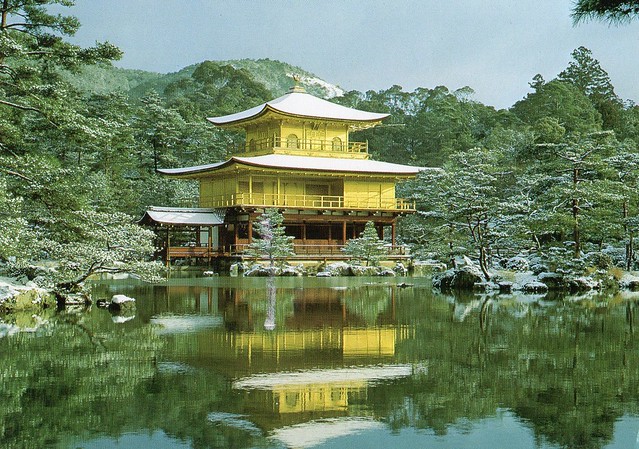

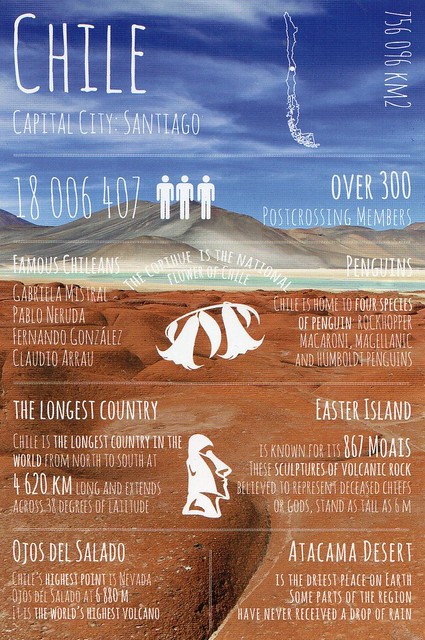



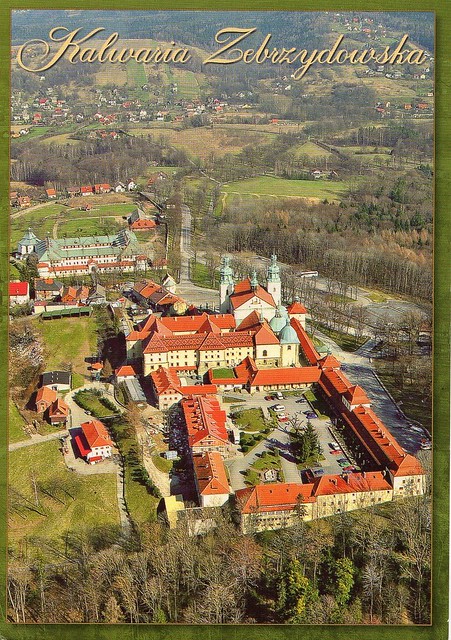

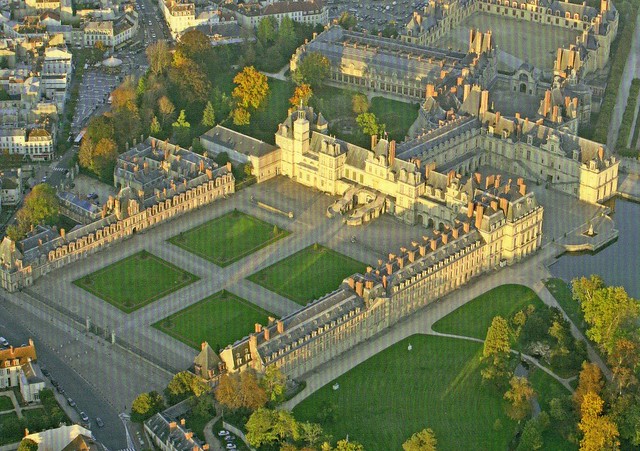





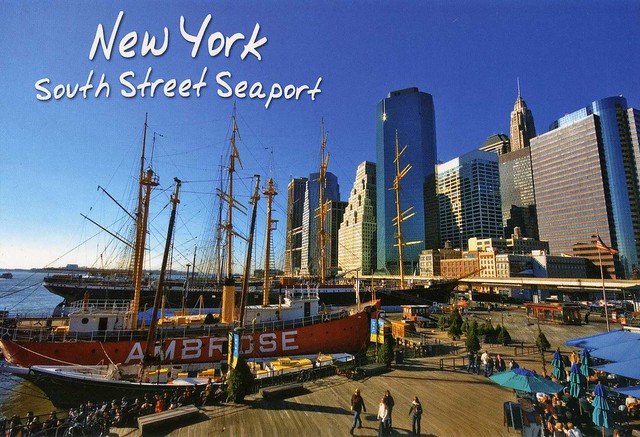
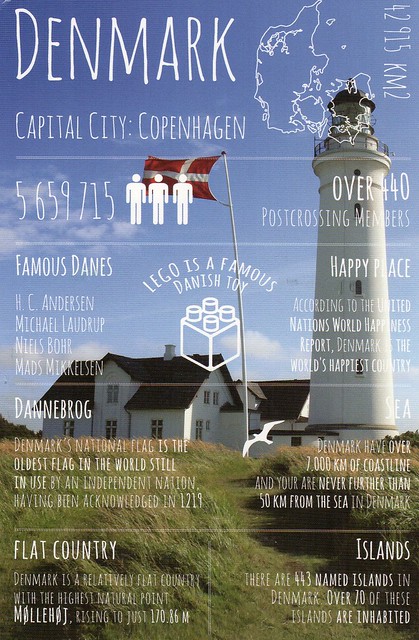









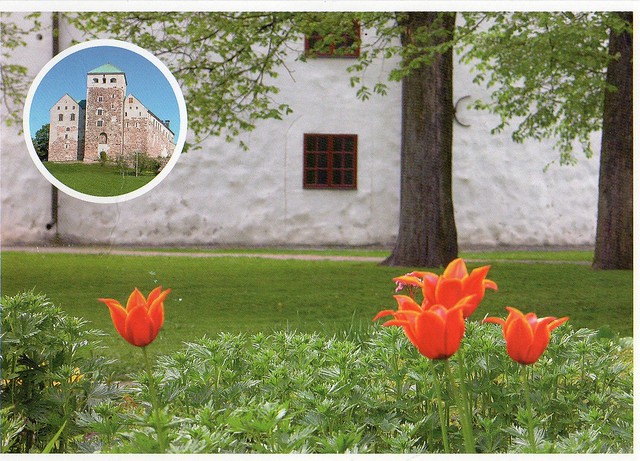

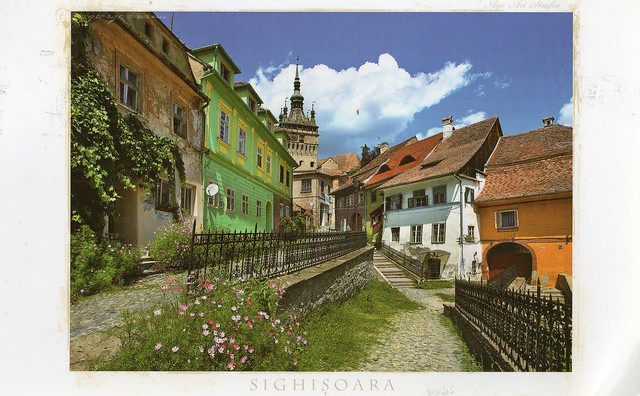



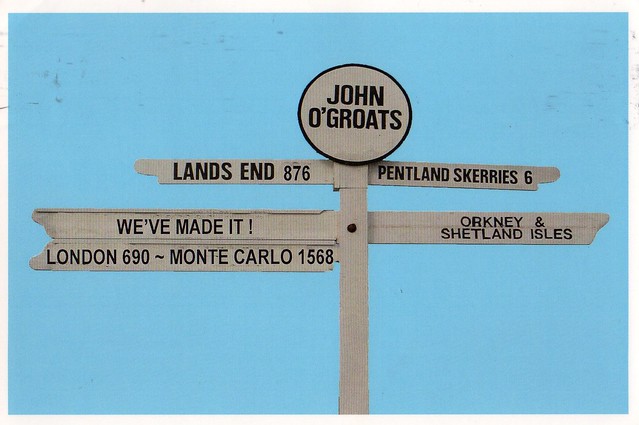
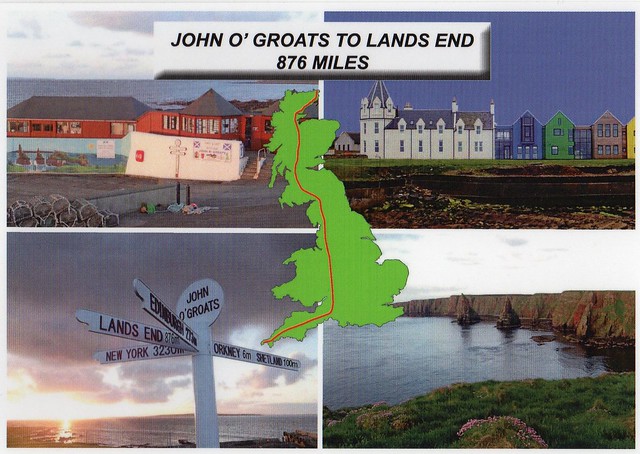



 Maroon
Maroon 









































































































































































